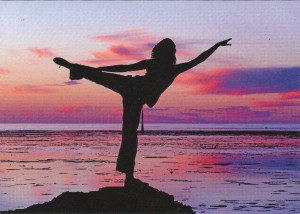I am primarily addressing women over 40 years old, the beginning of a key stage in a woman’s life. The following years are often years during which women, in the middle of their lives, need to be listened to and welcomed by other women. This life phase can be marked by reassessments of oneself, by hormonal, biological, psychological, emotional, and physical changes, as far as one’s self-image and one’s sensory experience are concerned.
An inner transformation process sets off. Women are touched in the very roots of their feminity when they are about to reach menopause. For some of them, this period can be a delicate shift. But it can also be a life stage, which helps to integrate past ordeals, pursuie a very personal journey of individuation, and grow in one’s own femininity…
A phase of “womenness” – of “matureness” – of blooming femininity
These are pretty phrases to describe the possibility to grow in all aspects of beauty, fullness and richness of a mature woman.
A large majority of women do not start worrying about menopause until about 50, while they are already facing rather unpleasant physical or emotional symptoms. Ideally they should prepare for those critical years at about 40, which would ensure a much more serene menopause by putting away a number of the problems related to it. Understanding that these symptoms are due to a decline in hormonal activity is already putting them on the right track.
Practicing Hatha Yoga and Yoga Femininity
In the West, the most popular yoga practice – Hatha Yoga – involves postures whose purpose is both to soothe the mind and to increase muscle tone. Yoga allows all those who practice to have a healthy, flexible and harmonious body. Few exercises are enough to regain vitality, bearing, grace, confidence, and a sense of harmony and balance… A valuable help in everyday life.
The body in the service of the soul:
What distinguishes Hatha Yoga from all other physical activities is that its primary purpose is to soothe the mind: the body is used to strengthen the mind. The Yoga of femininity includes the Yoga of hormones developed by Dinah Rodrigues (Brazil) as well as exercises to strengthen women’s pelvic floor. The Yoga of hormones is based on the principles of classical yoga, which aims to reactivate hormone production. It addresses:
- All women with premenstrual syndrome (all ages)
- Women as from 36 years (decreased production of hormones)
- Women with less sexual appetite
- Women wishing to remain “biologically younger”
- All young and apparently sterile practitioners, to regain their fertility
The sequences of this type of yoga last between 30 and 45 minutes. They have an effect on the body, but more specifically on the ovaries, the pituitary and the thyroid. With a regular practice, hormone production is stimulated and the symptoms are thus diminishing or disappear. They are simple overall and require no prior practice of yoga.
I propose women to discover their perineum, a region of the body often misunderstood and therefore often mistreated. During childbirth, women’s perineum is put under extreme pressure and stretching, which can leave important traces and sequels. This region can be treated thanks to a bit of knowledge and care. During menopause in particular, hormonal changes alter the shape and function of the perineum, especially as far as the musculature is concerned as it is less toned and unwinds easily. This often results in problems such as urinary incontinence and prolapse. In fact, these problems often reveal old lesions of the perineum, which occurred at birth and remained unnoticed until then – because of a certain amount of muscle tone. The decrease in tone and tissue resistance of the perineum breaks this balance. Nonetheless it is possible to accompany these changes at best.
Women’s perineum lives and responds at all ages and according to their life experiences – especially sexuality, childbirth and its aftermath. Through a conscious approach and rational experimentation, I propose women to understand their body, to know their perineum, and to build or rebuild it.
